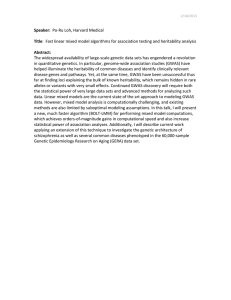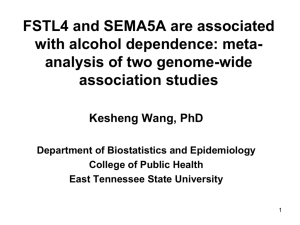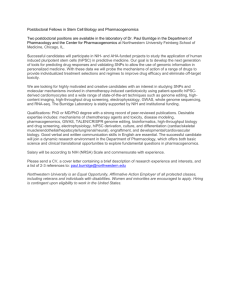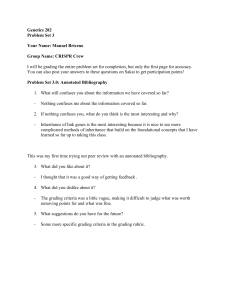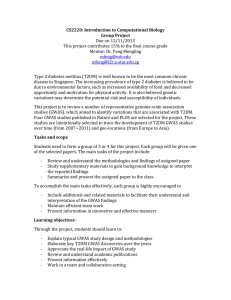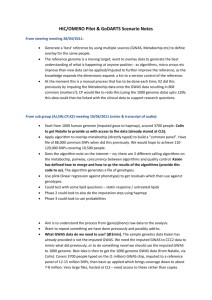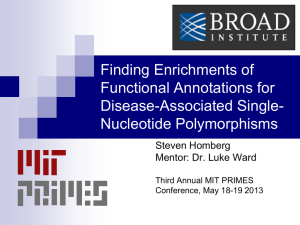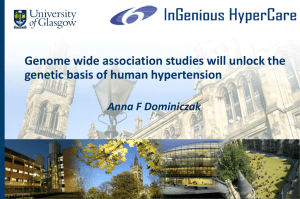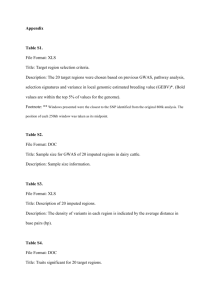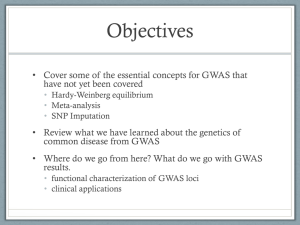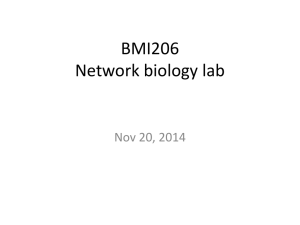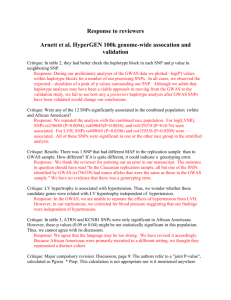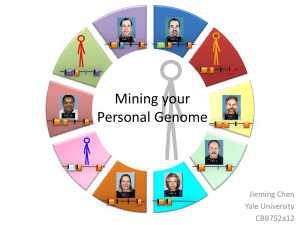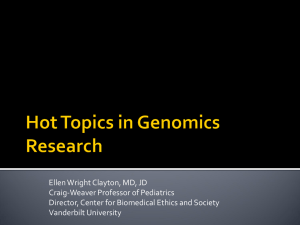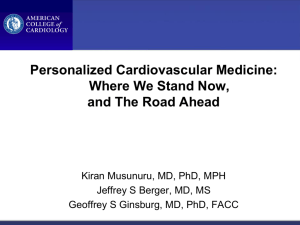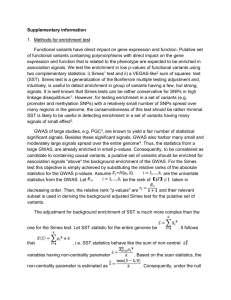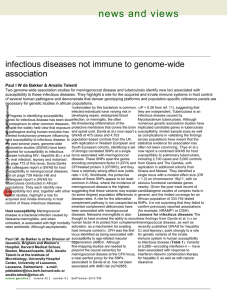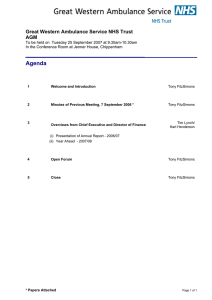GWAS ( Genome Wide Association Studies)
advertisement
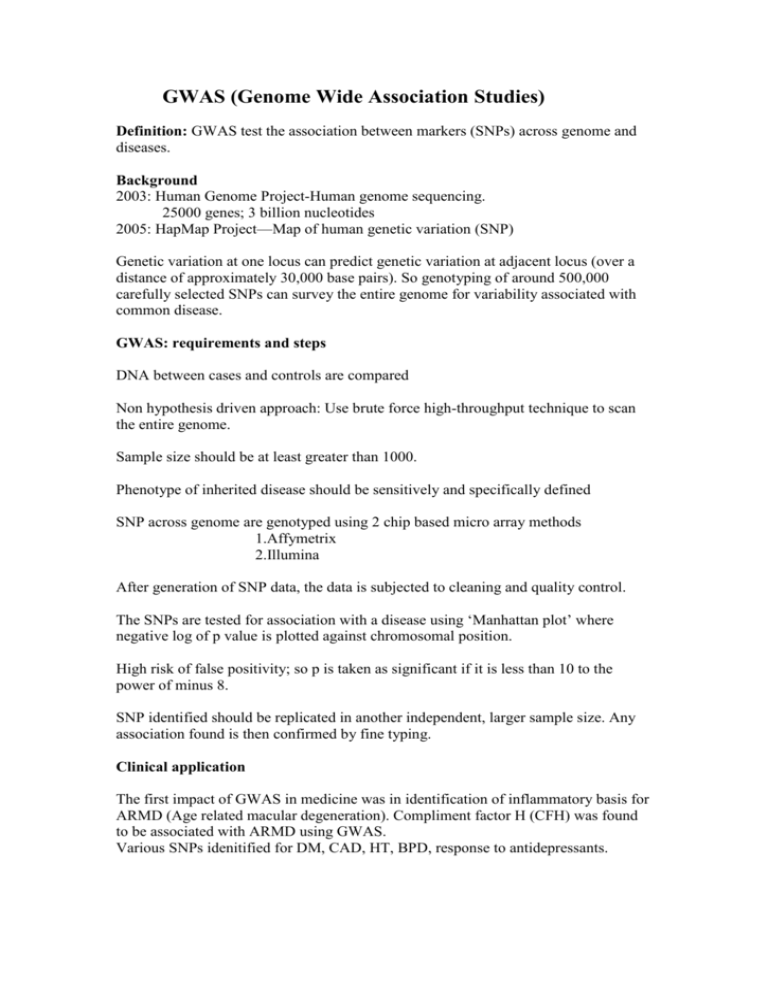
GWAS (Genome Wide Association Studies) Definition: GWAS test the association between markers (SNPs) across genome and diseases. Background 2003: Human Genome Project-Human genome sequencing. 25000 genes; 3 billion nucleotides 2005: HapMap Project—Map of human genetic variation (SNP) Genetic variation at one locus can predict genetic variation at adjacent locus (over a distance of approximately 30,000 base pairs). So genotyping of around 500,000 carefully selected SNPs can survey the entire genome for variability associated with common disease. GWAS: requirements and steps DNA between cases and controls are compared Non hypothesis driven approach: Use brute force high-throughput technique to scan the entire genome. Sample size should be at least greater than 1000. Phenotype of inherited disease should be sensitively and specifically defined SNP across genome are genotyped using 2 chip based micro array methods 1.Affymetrix 2.Illumina After generation of SNP data, the data is subjected to cleaning and quality control. The SNPs are tested for association with a disease using ‘Manhattan plot’ where negative log of p value is plotted against chromosomal position. High risk of false positivity; so p is taken as significant if it is less than 10 to the power of minus 8. SNP identified should be replicated in another independent, larger sample size. Any association found is then confirmed by fine typing. Clinical application The first impact of GWAS in medicine was in identification of inflammatory basis for ARMD (Age related macular degeneration). Compliment factor H (CFH) was found to be associated with ARMD using GWAS. Various SNPs idenitified for DM, CAD, HT, BPD, response to antidepressants. GWAS in gastroenterology 1. 2. 3. 4. 5. 6. Crohns disease: ATG16L1, IRGM, IL23R polymorphism Ulcerative colitis Coeliac disease Gall stones ALT Chronic HBV: HLA DPA1 and DPB1 in Japanese population predict chronicity of HBV 7. Chronic HCV: IL28B polymorphism (predict response to IFN) Limitation Large sample size: High cost (3 to 4 crore for a GWAS of 2000 people) High false positivity. Small effect size of risk allele ( OR 1.2 to 1.5 for most SNPs) Disease associated SNPs are usually found in the non coding region of genome (Significance not known) GWAS is only a first step to generate a hypothesis. Association identified with GWAS need to be confirmed with other tests.
